Here at Pepper Geek, we’re big on highly functional, affordable indoor grow lights. When we saw some fellow pepper growers using SANSI grow lights for starting pepper seeds indoors, we were intrigued.
We reached out to Sansi and they were nice enough to send us a couple of their grow light options. Our main goal with these SANSI LED lights is to test their ability to grow healthy, strong pepper seedlings. The two lights we tested were the 60W foldable LED light, and the 70W hanging LED light. These two lights come in very different designs, but offer similar light output and power usage.
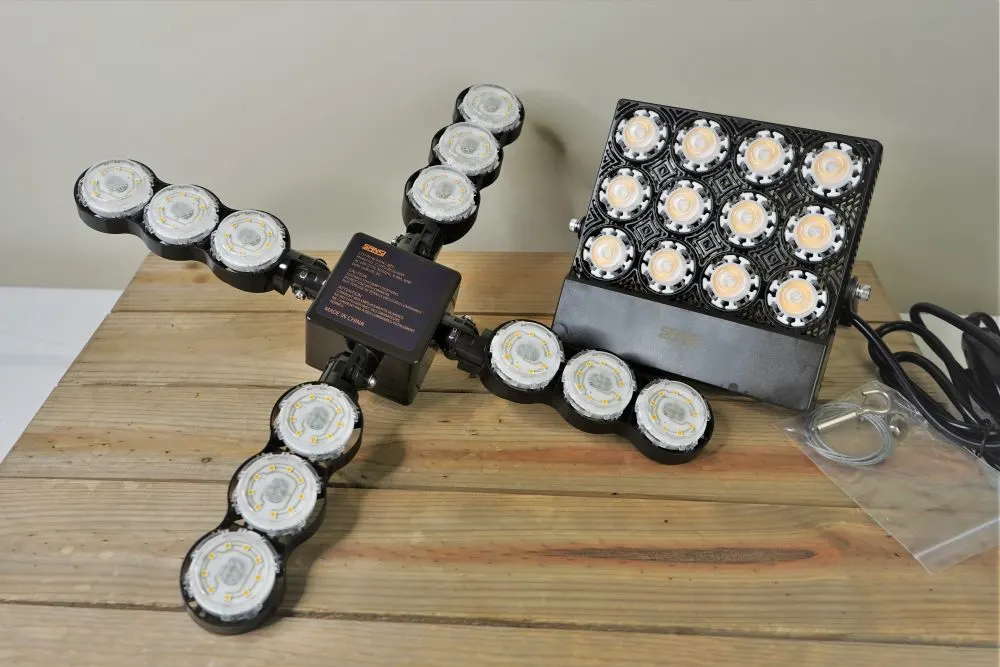
I like that SANSI offers a generous 5-year warranty for their products (US and Canada only). They also have a dedicated customer service team available should you encounter any issues with your lights. We appreciate a company that stands behind their products.
In this post, I’ll share our experience with both of these SANSI lights in a
60W LED Grow Light
We’ll start with the 60W collapsible unit. This unique design is foldable for convenient storage. It also plugs directly into a traditional lightbulb socket, which may be convenient for some. However, this means that it does not come with a ready-to-use power cable.
If you don’t have one already, you will have to buy a separate lightbulb socket to power this unit (like this on Amazon).
About:
- Dimensions: 17″x17″x3.5″ (opened) or 6″x6″x7″ (collapsed)
- Power consumption: ~55W
- Power source: 120V lightbulb socket
- Lifespan: 50,000 hours (claimed)
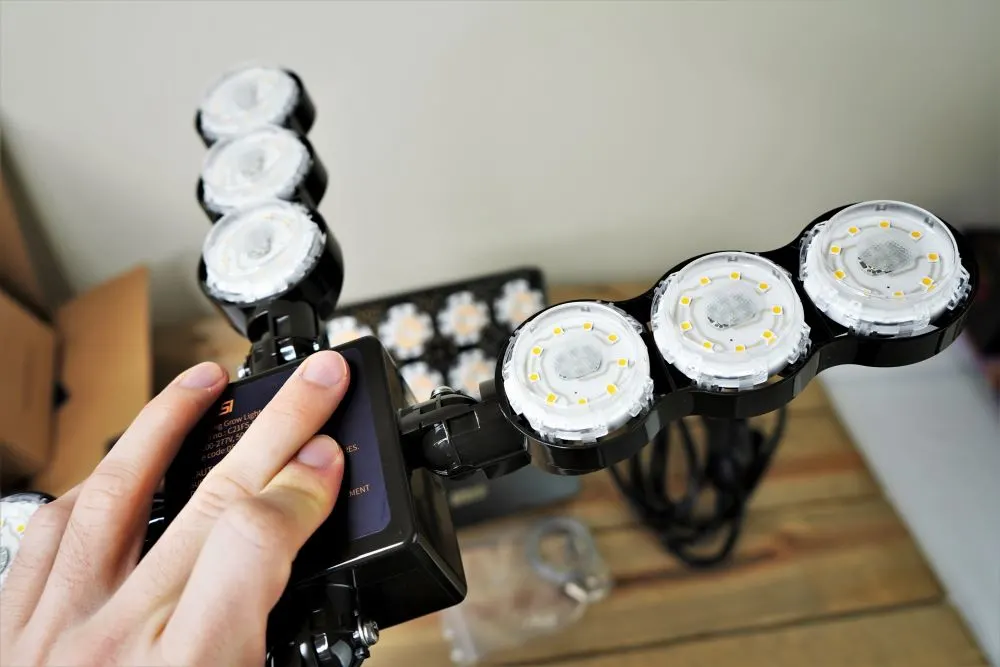
Form Factor
The 60W SANSI grow light has a unique form factor. It is actually designed to be mounted in garages and warehouses, but can be used for growing plants as well. The foldable design makes it easy to store when not in use.
The ability to fold the arms also offers the advantage of being able to manipulate the direction the light is pointing. Each arm contains 3 circles of LEDs for a total of 12 units.
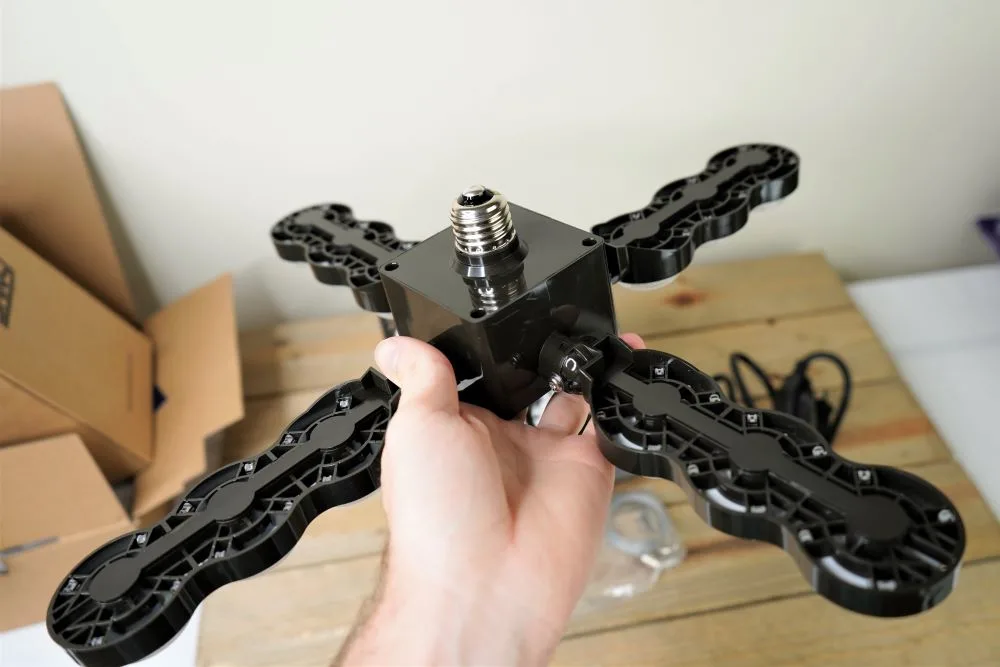
Another interesting choice in this design is the Edison Screw base. This light does not come with a power cable, but instead must be plugged into a standard lightbulb socket. This means that the light is not ready for use out of the box unless you have the necessary power cable or connection on hand.
Price
Pricing is a major benefit of the SANSI LED brand. High quality LED grow lights can become expensive (easily in the hundreds of dollars). At around $40-50 for the 60W light depending on the source, the price is on the affordable side.
Power
As with many affordable LED grow lights, the light’s wattage is slightly misleading. The light claims to use 60 watts of power, but only draws around 55 watts from the wall. This could have something to do with the onboard driver being powered through a lightbulb socket.
Our reading of the 60W light’s intensity at 12″ is significantly lower than that of the 70W light. We don’t have the expensive equipment needed to properly test the PAR value of these grow lights. However, our basic foot-candle readings can at least show comparative brightness.
Using the same light intensity reader at 12″ from the light source, here are the results:
- SANSI 60W: ~ 200 foot-candles
- SANSI 70W: ~ 500 foot-candles
- HLG 100 V2: ~ 2,300 foot-candles (for comparison, a 100W LED panel grow light)
Since the light actually draws more power than the 70W, it may simply be scattering more light away from the grow area. In other words, the 70W light casts a more concentrated light.
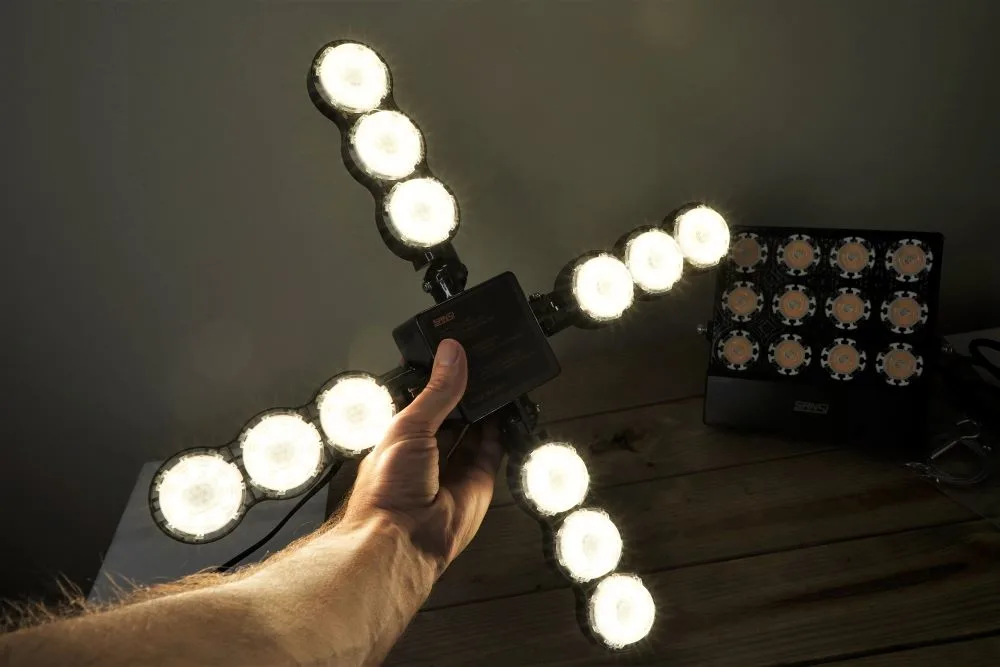
With this level of light output, this 60W light is capable of starting pepper or tomato seeds indoors in the spring. However, its form factor is not ideal for spreading the light evenly across a small grow space. Purpose made LED grow light panels are better suited for growing seedlings.
70W LED Grow Light
SANSI’s 70W grow light comes in a more typical shape (rectangular) that indoor growers are accustomed to. The light is easy to hang with the included hook and wire, and plugs directly into a 120V outlet. For added value, this light is water resistant, which means you won’t have to worry about misting your plants and short-circuiting your grow light.
About:
- Dimensions: 7″x7″x1.5″
- Power consumption: 49W
- Power source: Built in
- Lifespan: 50,000 hours (claimed)
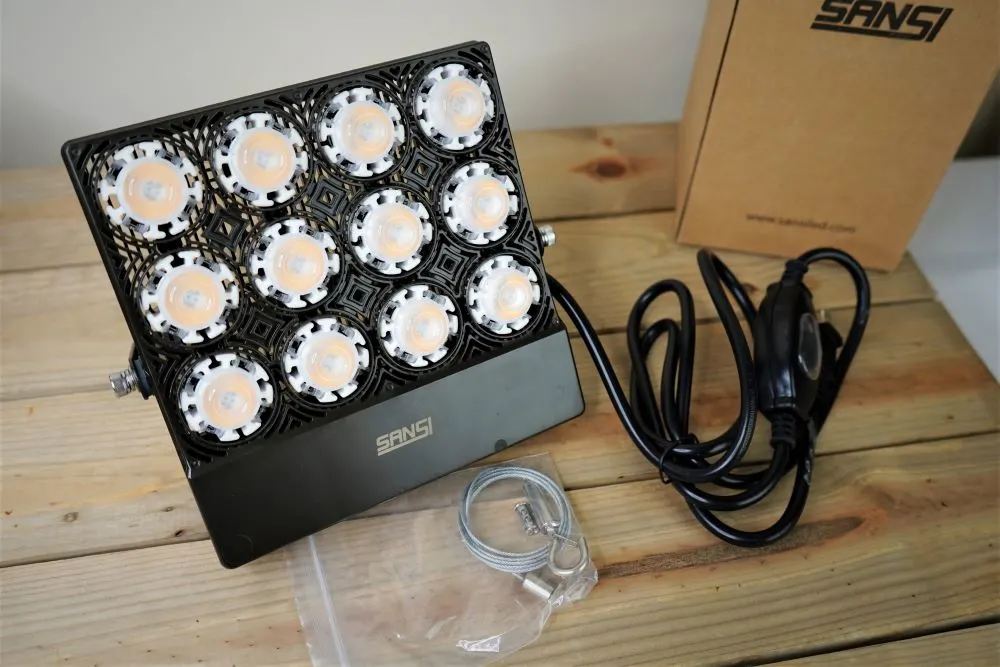
Form Factor
The 70W SANSI LED measures 7″x7″. This makes it more convenient for smaller grow spaces. The light also comes with a simple hook and wire mechanism, making it super easy to set up and hang the light at the desired height above your plants.
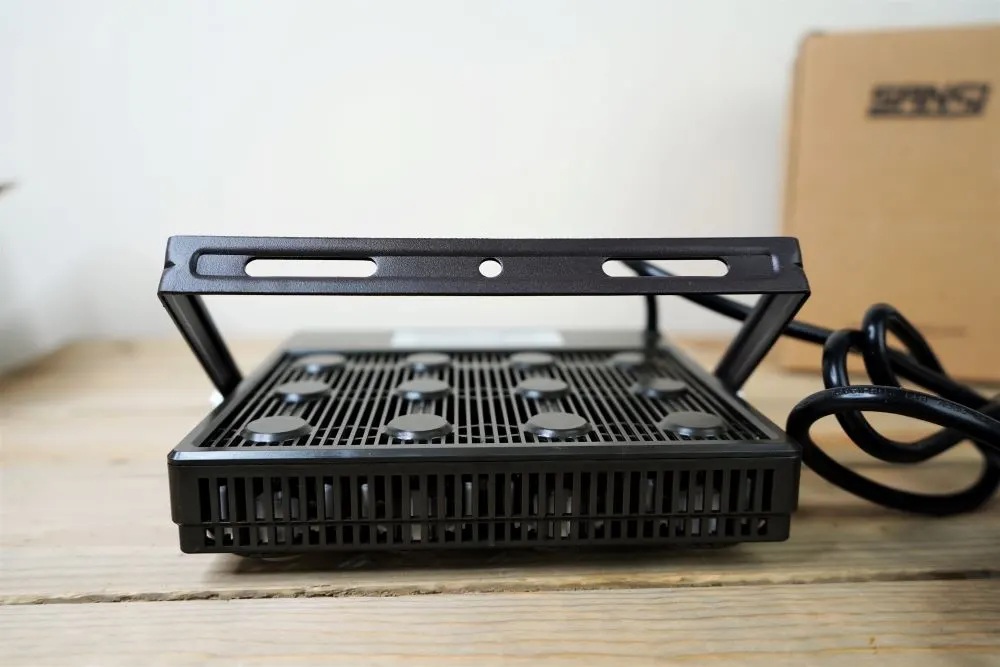
The light can be mounted a few ways, but we found that hanging from the center hole was best for our setup. It can also be mounted directly to a wall or other mounting surface and tightened to remain at any angle.
Most importantly, this light comes with a built-in power supply and power cord. For these reasons, we prefer this light over the folding unit.
Features
This is where both of the Sansi LEDs fall short when compared to other grow lights. These LEDs don’t feel like they were designed for growing plants, and indeed they weren’t.
For example, almost all of our favorite grow lights have a dimmer knob. These Sansi lights do not. Our best grow lights also have better hanging equipment for adjustable height.
However, the Sansi 70W light does have a unique form factor. In some abnormal growing setups, I could see how this light may be more useful than traditional LED grow light panels (for example, it can be propped up on its mounting bar to shine light upwards at an angle).
Price
The price is only slightly more than the 60W option, but the 70W is more appealing for most growing setups. When you consider that the 60W requires a light socket to function, the 70W LED is almost a no brainer.
The 70W light from Sansi is again a very reasonable price, even considering actual power draw is only around 50W.
Power
As with the 60W light, the “70W” light is not true to actual power consumption. This light actually draws less power from the wall at around 49W.
With this level of power, the light is perfectly capable of growing strong seedlings for transplanting outdoors. It would also be suitable for growing herbs or leafy greens.
We haven’t tested this light for growing full sized, fruiting plants, but it would likely take multiple lights to get the best harvests. A stronger grow light like the Viparspectra P1000 would be a better option.
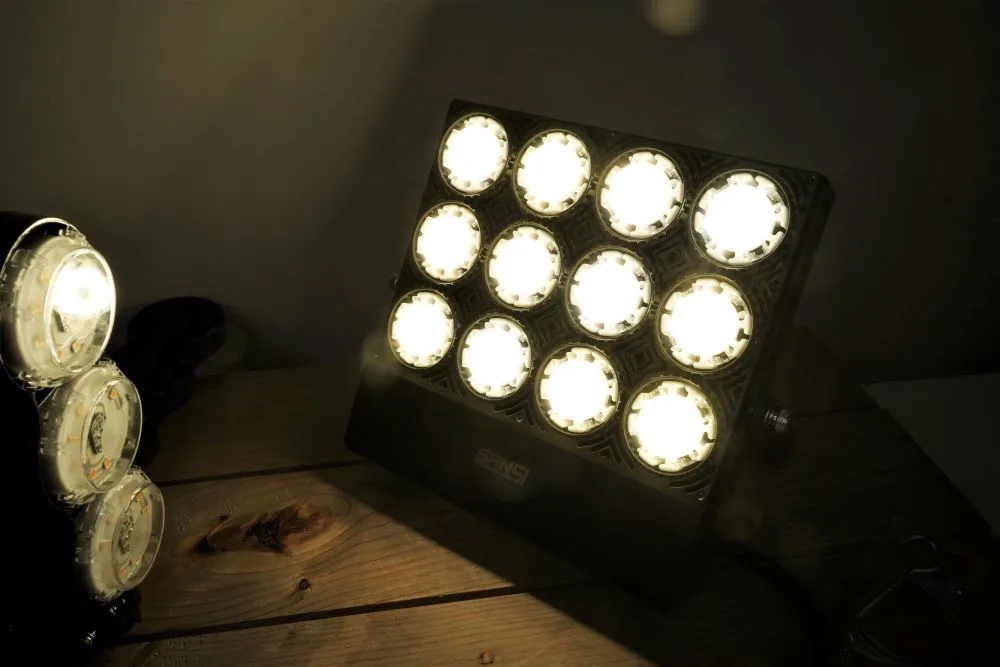
This light puts out a noticeably warmer tone of light than the 60W model. Warmer light (more red-shifted) is typically better for the flowering and fruiting stage of growth, while cooler light is best for vegetative (leafy) growth.
Overall Thoughts on SANSI LED Lights
These two lights offer similar performance, but have some major differences. Here are the important pros and cons of each of the lights we tested:
70W Sansi LED
Pros:
- Ready to use out of the box
- More light intensity
- Easy to hang
- Water resistant
- 5-year warranty
Cons:
- Unknown PAR values and coverage
- Likely not designed with plant growth in mind
60W Sansi LED
Pros:
- Folds for convenient storage
- Can be plugged into a light socket
- Affordable
- 5-year warranty
Cons:
- Large and slightly awkward design
- Misleading power output
- Requires separate light bulb outlet to function
The main concern with both of these LED lights is their form factor. They differ greatly from other, more popular grow lights. This is because these lights were not originally intended for growing plants. As a result, the shape and design make both lights slightly awkward in the indoor growing space.
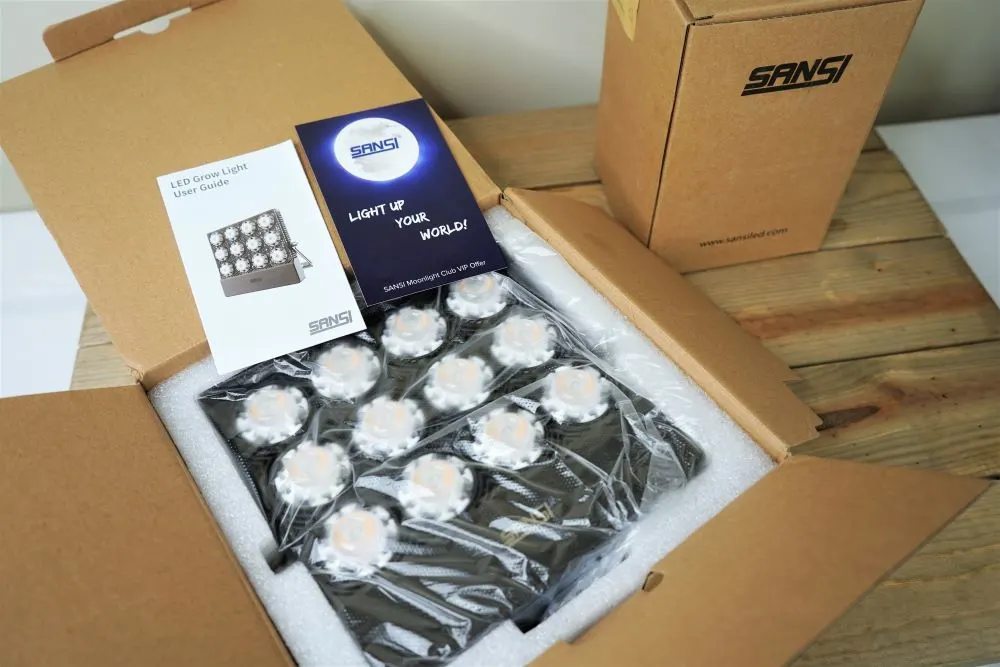
Shop SANSI Lights
Related:


ron smith
Saturday 16th of October 2021
No progress updates. Verdict?